What are Watercolor pencils?
Watercolor Pencils look very similar to regular colored pencils, but you can activate it by adding water to create a soft blended look. They can be used very well to create your base drawing for a watercolor painting and also to add finer details or to do your whole painting!
Advantages
- Watercolors can be difficult to handle, especially for children because most of the time they end up adding too less water or too much water. Watercolor pencils on the other hand can be easier to control. You may draw your artwork with your watercolor pencils like you would do with a regular colored pencils( applying lighter and darker shades, layering with different colors ) and then when you are satisfied add a bit of water at a time to blend it in.
- The second advantage is to be able to sketch your idea especially if you are planning on painting something with a lot of details.
- You can also use it to add finer details to your finished painting with much ease.
- The next advantage is that it is easier to maintain. You don’t have the hassle to clean your brushes every time. You don’t have to invest in expensive brushes. I usually use a size 6 or 8 round brush. But what I really like is watercolor brush pens. I just fill it in with water and I am good to go!
That being said, is watercolor pencils a replacement to traditional watercolors? The answer is : NO! But still it a good way to begin and get used to the idea of watercolors for young artists.
Watercolor pencil Techniques
I am going to try some basic beginner techniques using watercolor pencils, some of them are very similar to what we would use for regular watercolors!
- Creating Washes
We will do four different kind of washes: The colors I used are Orange-Red and a bright Yellow from my Arteza Watercolor Pencil set
- Flat wash – To create a flat wash I used my Orange-Red and colored it evenly with medium pressure through out; next I used my round brush and some water to blend it in to create an even shade of orange.
- Gradient wash- To create my gradient wash I used my Orange-red and started coloring with heavy pressure and gradually decreased my pressure as I went down so that I have a gradient value of lighter to darker. Then I started blending from the lighter part to darker part to create my gradient wash of orange.
- Layered wash ( light on dark)- To create this wash I started by coloring with my orange -red( darker shade) and then layered it on top with my lighter shade( yellow); then I blended it with water. This created an Orange-yellow shade with Orange as my dominant color.
- Layered wash ( dark on light)- To create this wash I started with my yellow( lighter shade) with heavy pressure and then layered it on top with my Orange-red (darker shade) with medium to light pressure; then I blended it with water. This created a yellow-orange shade with yellow as my dominant color.
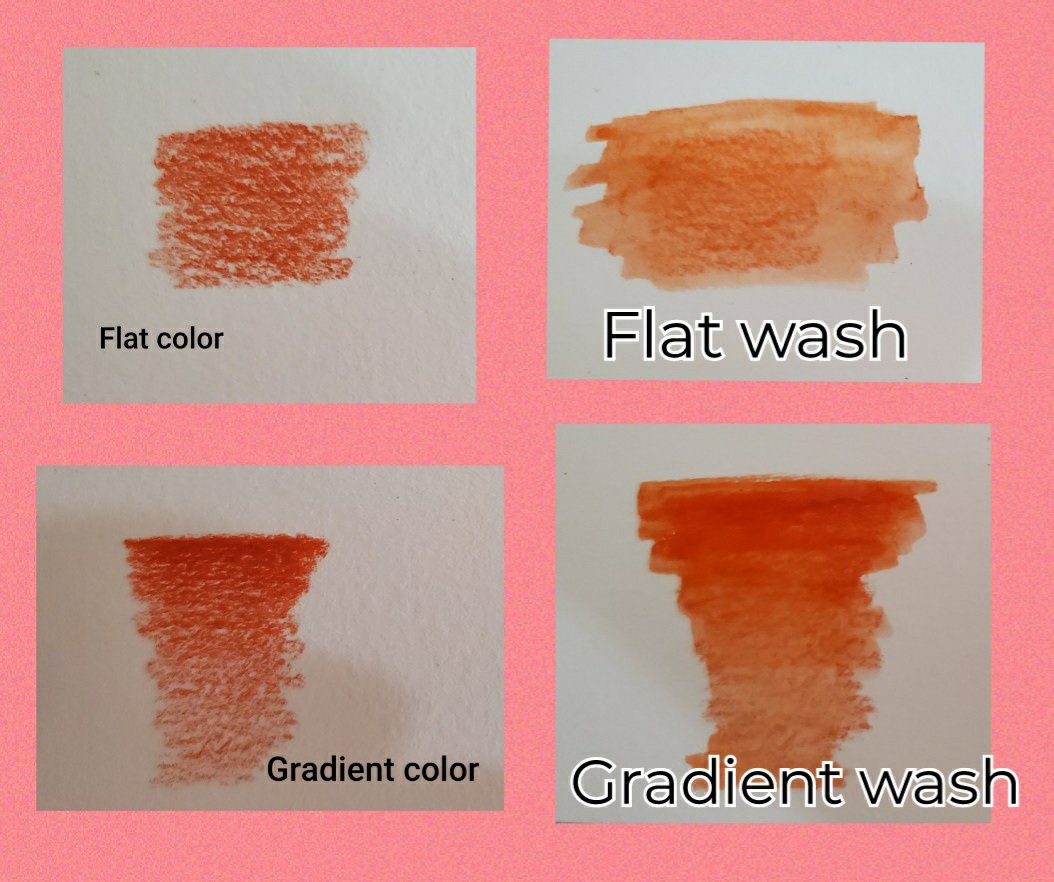
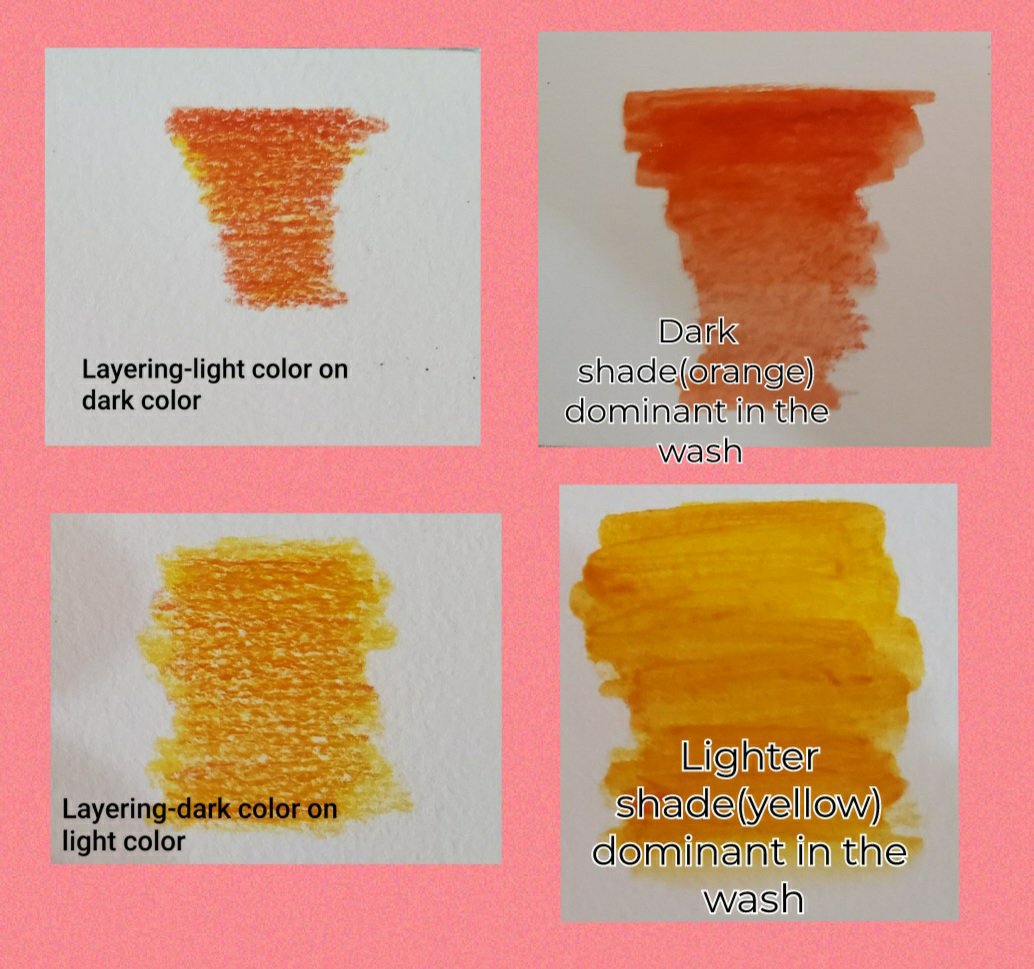
- Dry-on-Wet and Wet-On-Wet Techniques
- Dry-on-wet: In this technique, we will first wet our watercolor paper with water, then go on top with our dry watercolor pencil.
- Wet-on-wet: In this technique, we will first wet our watercolor paper, then wet the tip of our pencil too and ten use the wet pencil on our wet paper.
These seem to work very similar to usual watercolors but, the color pigments are visible clearly unlike regular watercolors.
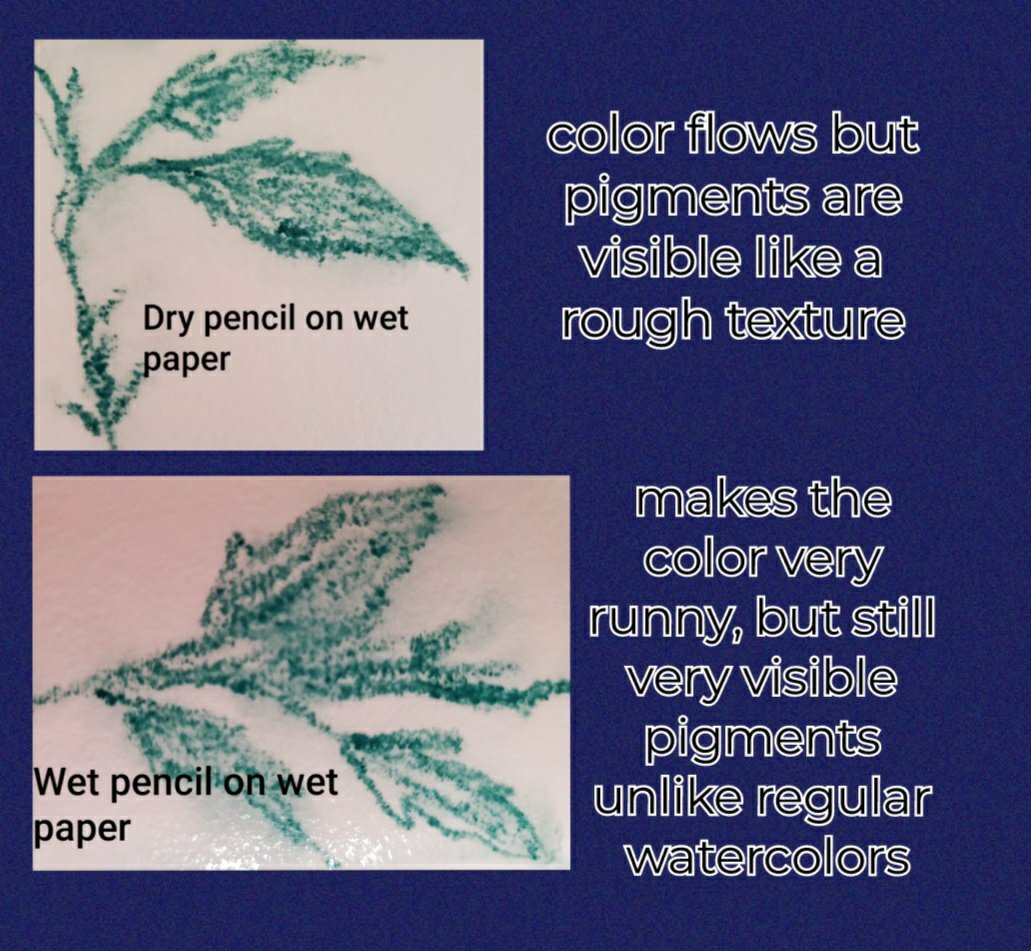
- Variegated wash In this technique, you use multiple colors blending them in when one color meets the other. There are two ways to try this using watercolored pencils: 1. Adding the first color, blending it with water and while it is still wet, start at the bottom with your 2nd colored pencil! (Dry on Wet)
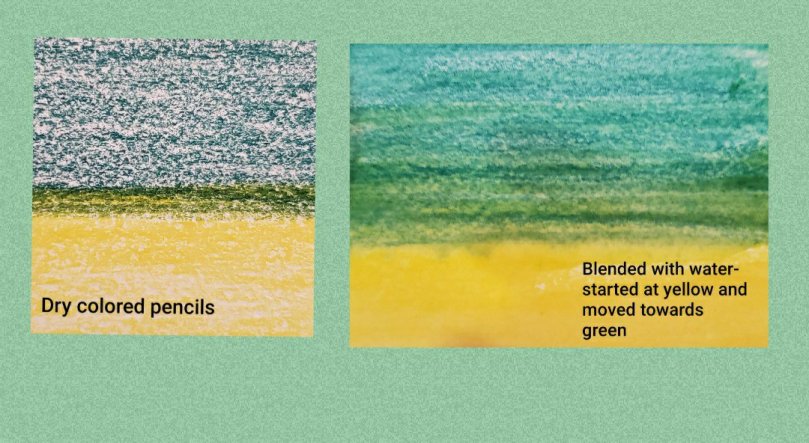
2. Add the first color, then add the second color at the bottom mixing it where they meet and then blend the colors using water.
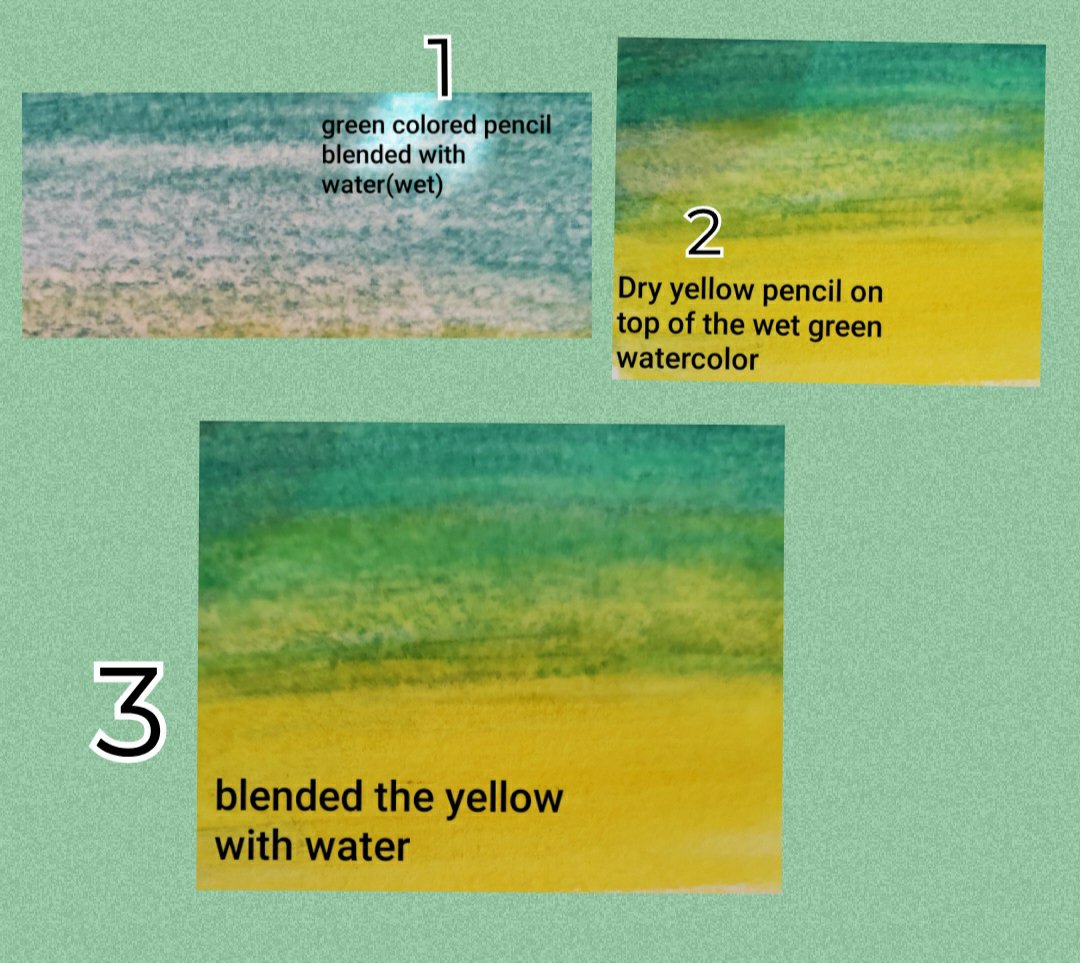
- Scumbling In this technique, you make random patterns with single or multiple colors to add interesting texture. I am going to apply my first layer and blend it first. Then on top I am going to add my random scumbling texture with my dry colored pencil.
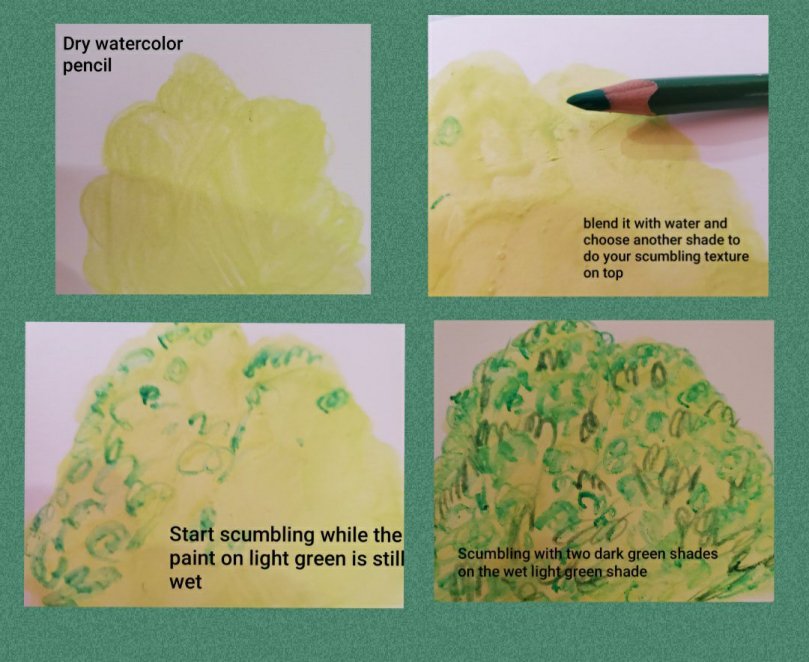
- Flicking In this technique, you make lines by starting off with heavy pressure and flick up so that the pressure decreases at the end of the line, thus creating lines which are thicker at the bottom and get thinner as you go up. This is a great technique to create grass texture and much easier to do with watercolored pencils rather than using traditional watercolors.
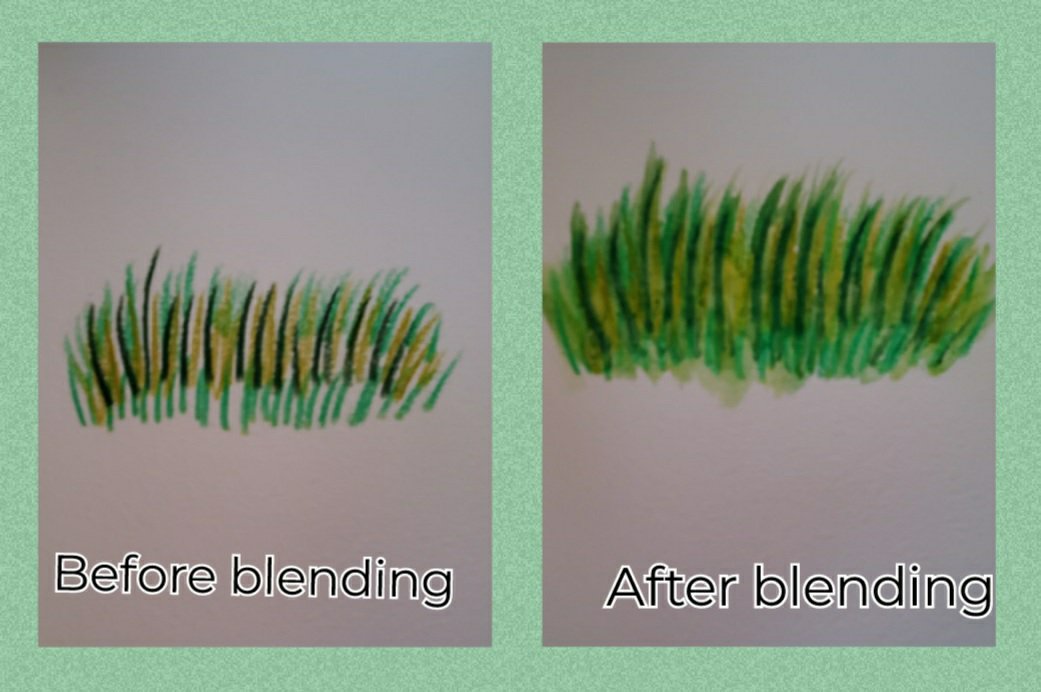

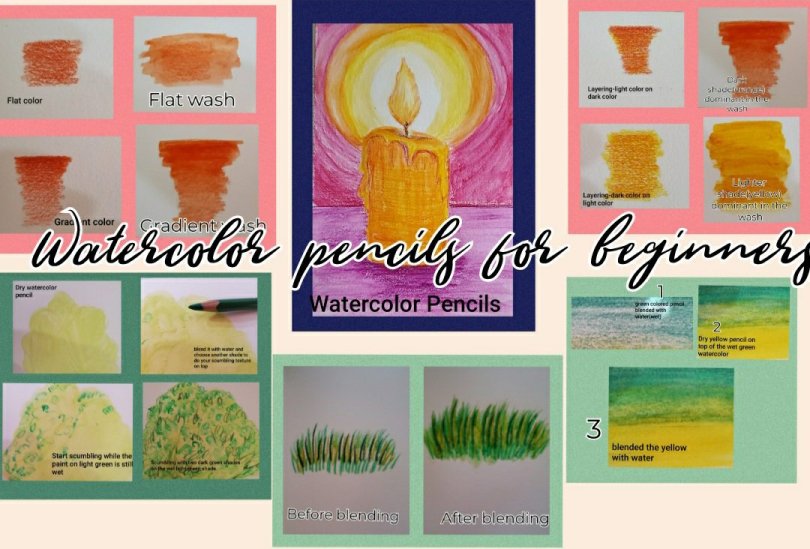
[…] baby oil while watercolor pencils can be blended using water( Read about watercolor pencils hereWatercolor Pencils for Little artists! ) But in this post, we will be discussing some basic beginner wax-based colored pencils. The color […]
LikeLike